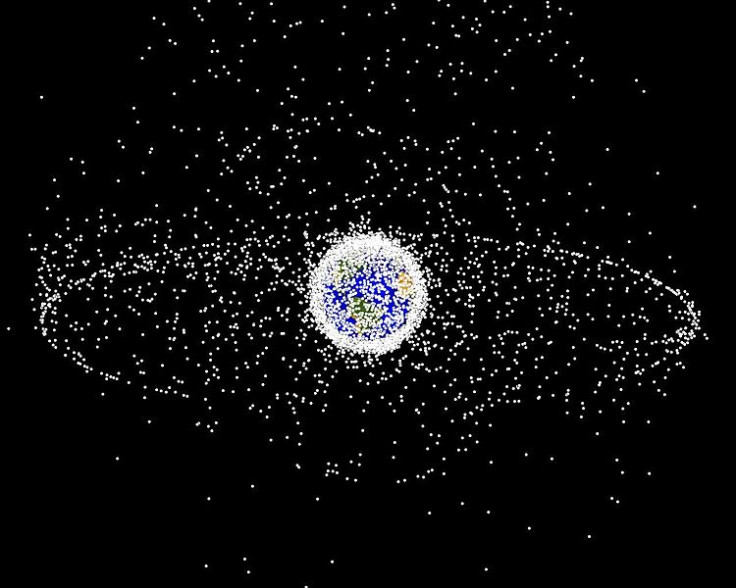Switzerland will send 'giant Pac-Man' into orbit to gobble up space junk and destroy it

A giant Pac-Man-style satellite is to be sent into space to capture and destroy debris orbiting Earth.
Space debris pose a huge risk to satellites and future space missions, as seen in the 2013 film Gravity. It is the collection of debris from previous missions, such as old satellites and used rockets, which orbit around Earth.
At present, it is thought there are around 100m bits of space debris measuring less than 1cm, around 500,000 between 1cm and 10cm and 21,000 larger than 10cm. While many of the objects are very small, the speed at which they are travelling means they can cause enormous damage.
A 2011 report by the US National Research Council said we are nearing "tipping point" in terms of the amount of debris in orbit. This point – the Kessler effect – infers a time when the density of space debris is high enough to cause collisions that will then lead to more space debris. Eventually, it will be almost impossible to have satellites because they will be destroyed almost as soon as they are sent into orbit.
There are a number of methods being developed by countries to remove space debris. For example, last year Japan announced plans to create a magnetic fishing net to collect debris – the mission is planned for 2019.
However, the Clean Space One Project, from Switzerland's École Polytechnique Fédérale de Lausanne, has another technique in mind.
The project has announced it will deploy a conical net to capture the SwissCube satellite before destroying it in the atmosphere. The SwissCube has been in orbit for over five years and researchers were tasked with ensuring it would not become another piece of space debris.
Scientists spent three years working on a space clean-up satellite that will trap the SwissCube. The pair will then combust together in the atmosphere.
The problem with the SwissCube is that it is difficult to grasp and has darker and lighter parts, which reflect sunlight differently. This means estimating its speed and distance is hard, confusing any visual approach system.
To design a way to capture the satellite, researchers came up with the "Pac-Man" system, a prototype that looks like a cone-shaped net that unfolds then closes back up after capturing the satellite.
Michel Lauria, professor of industrial technology at Hepia Geneva, which collaborated on the project, said: "This system is more reliable and offers a larger margin for manoeuvring than a claw or an articulated hand."
The team say the Pac-Man satellite dustbin could be launched as early as 2018. The next stage of the project will be to combine the prototype models with more extensive testing. Muriel Richard-Noca, head of the project, explained: "It only takes one error in the calculation of the approach for SwissCube to bounce off CleanSpace One and rocket out into space."
© Copyright IBTimes 2025. All rights reserved.






















